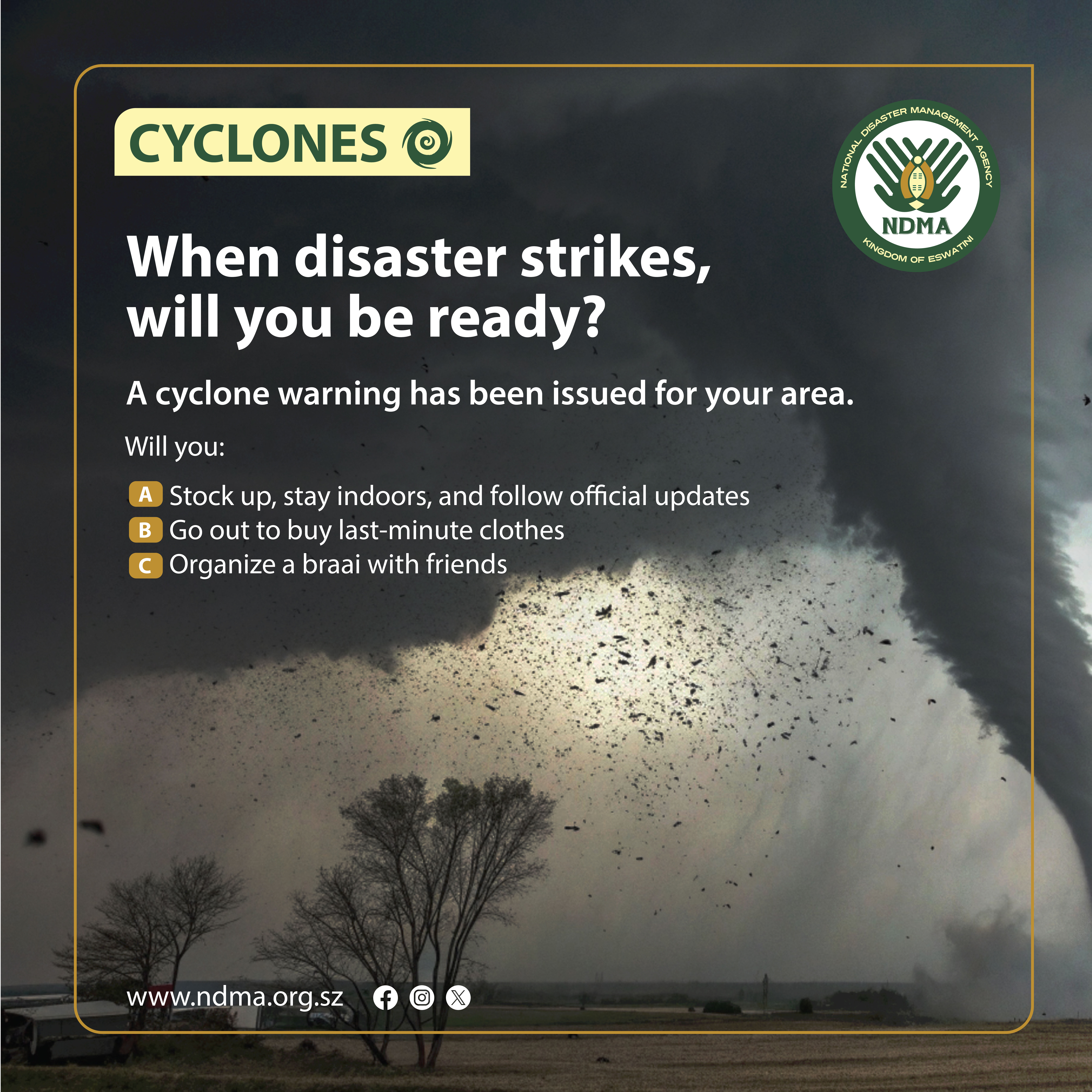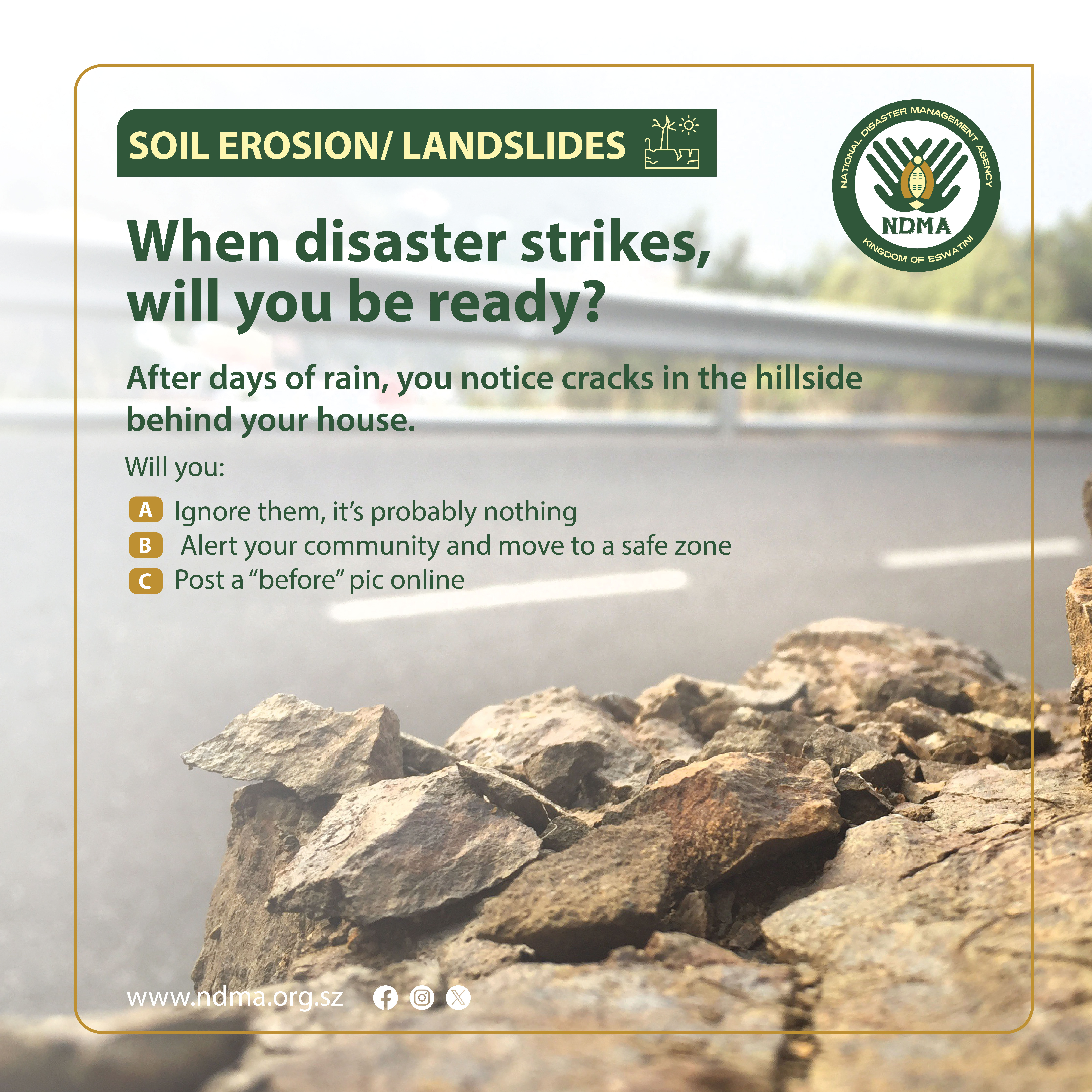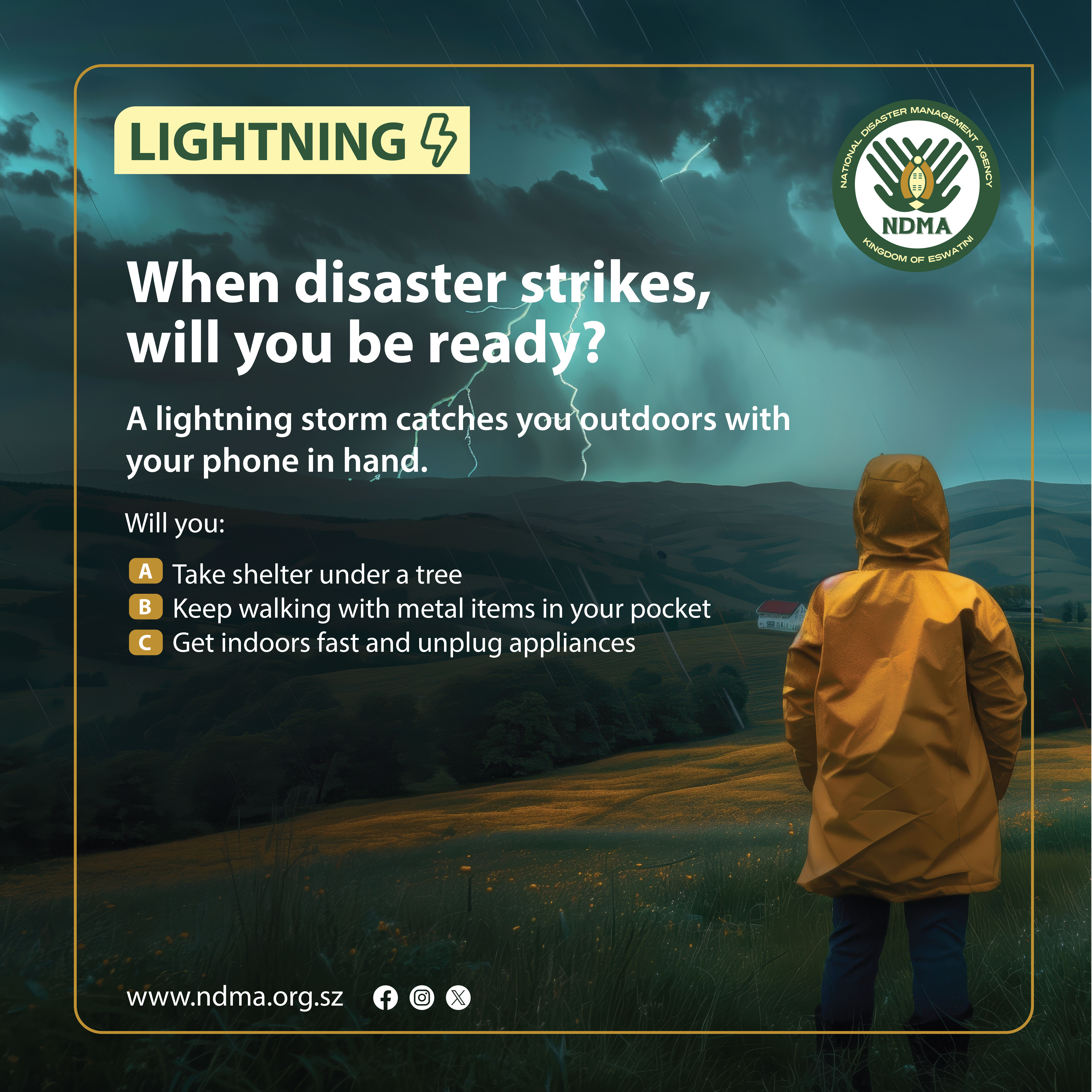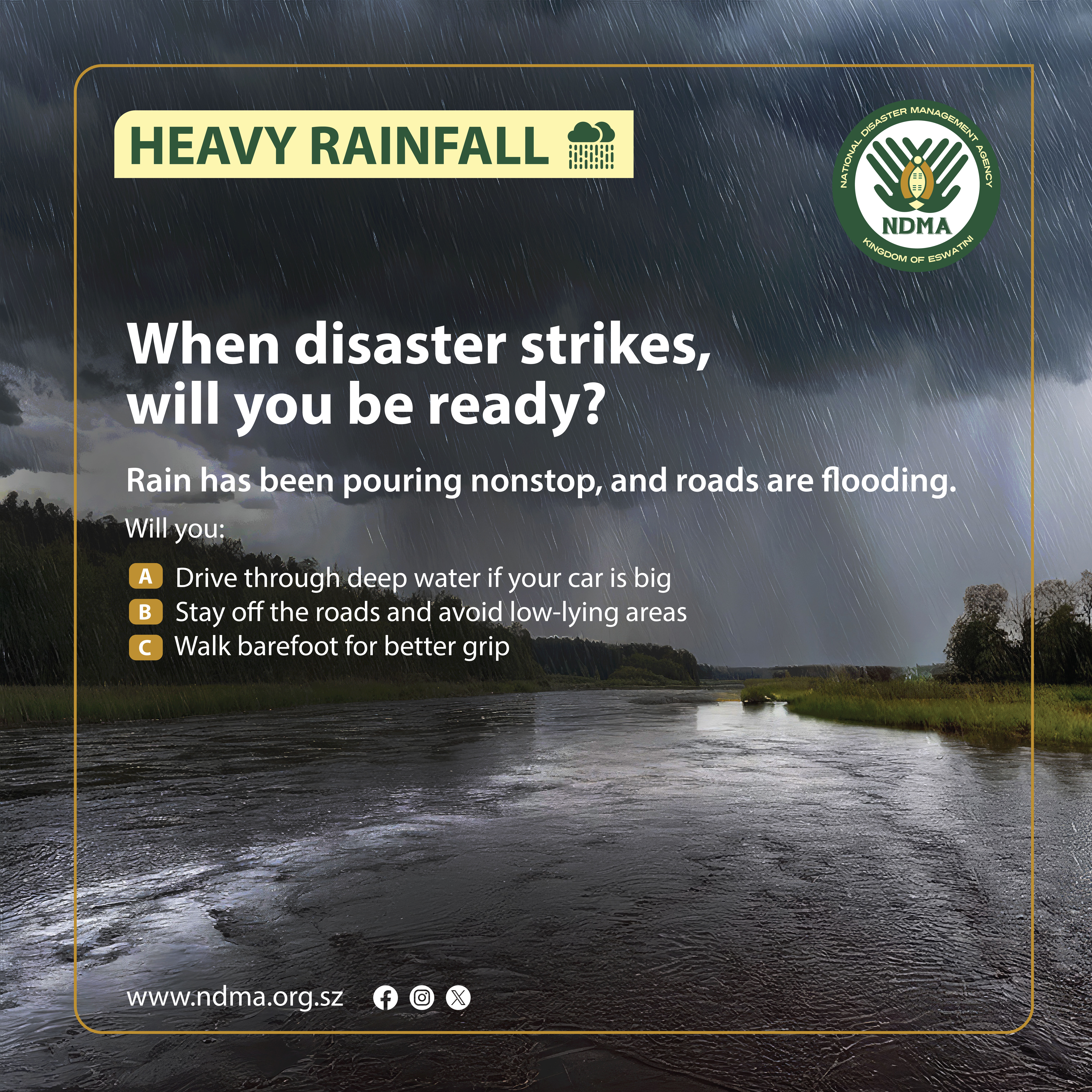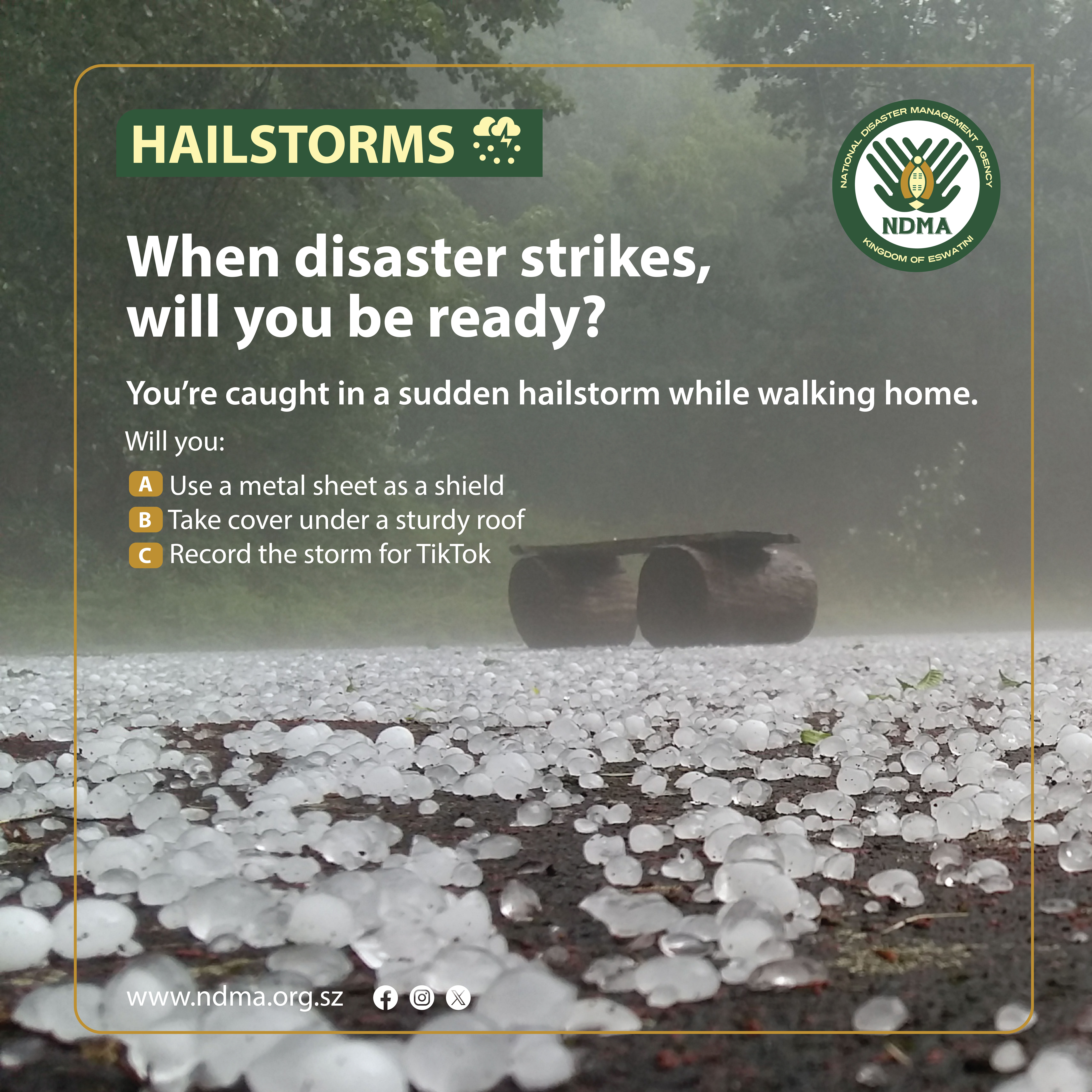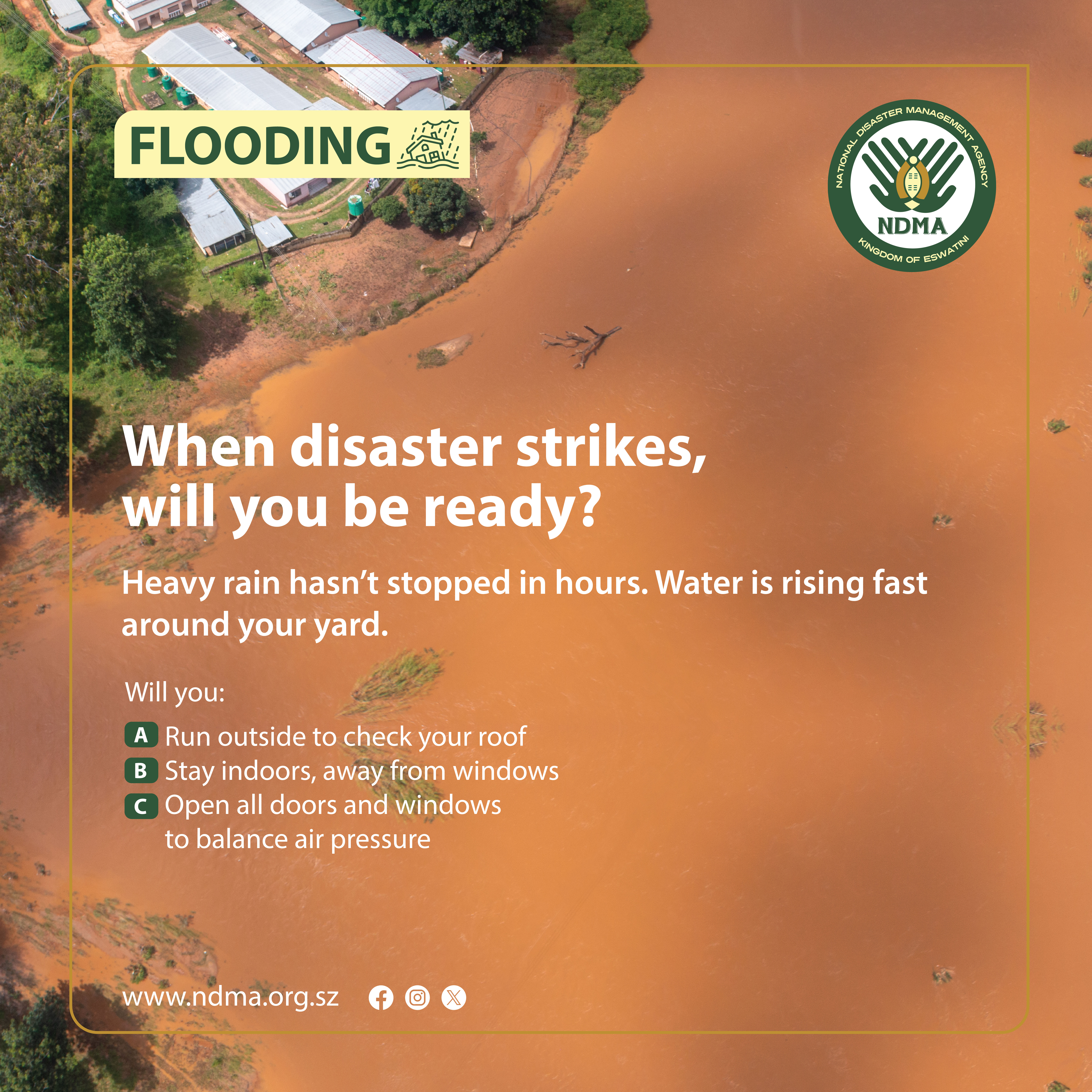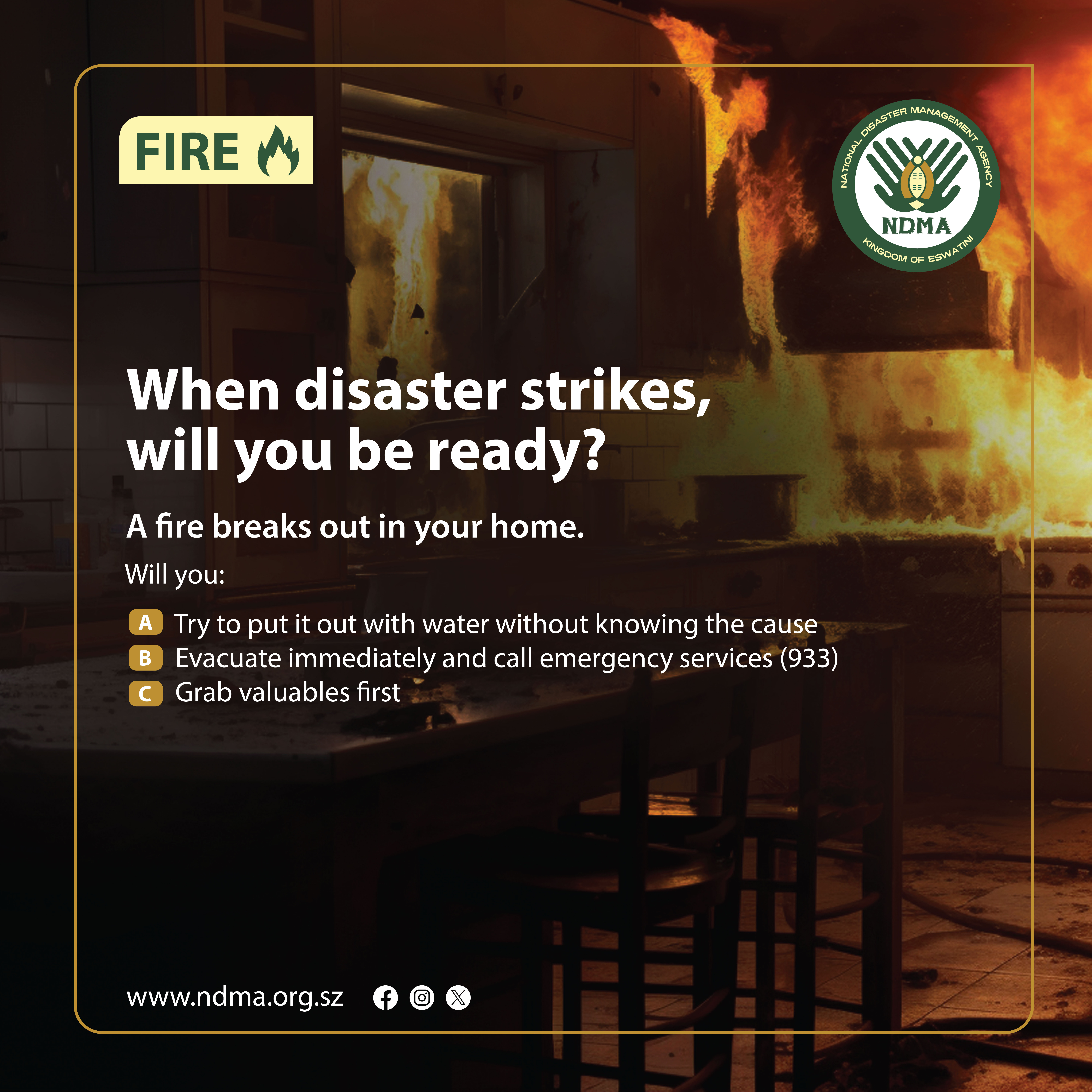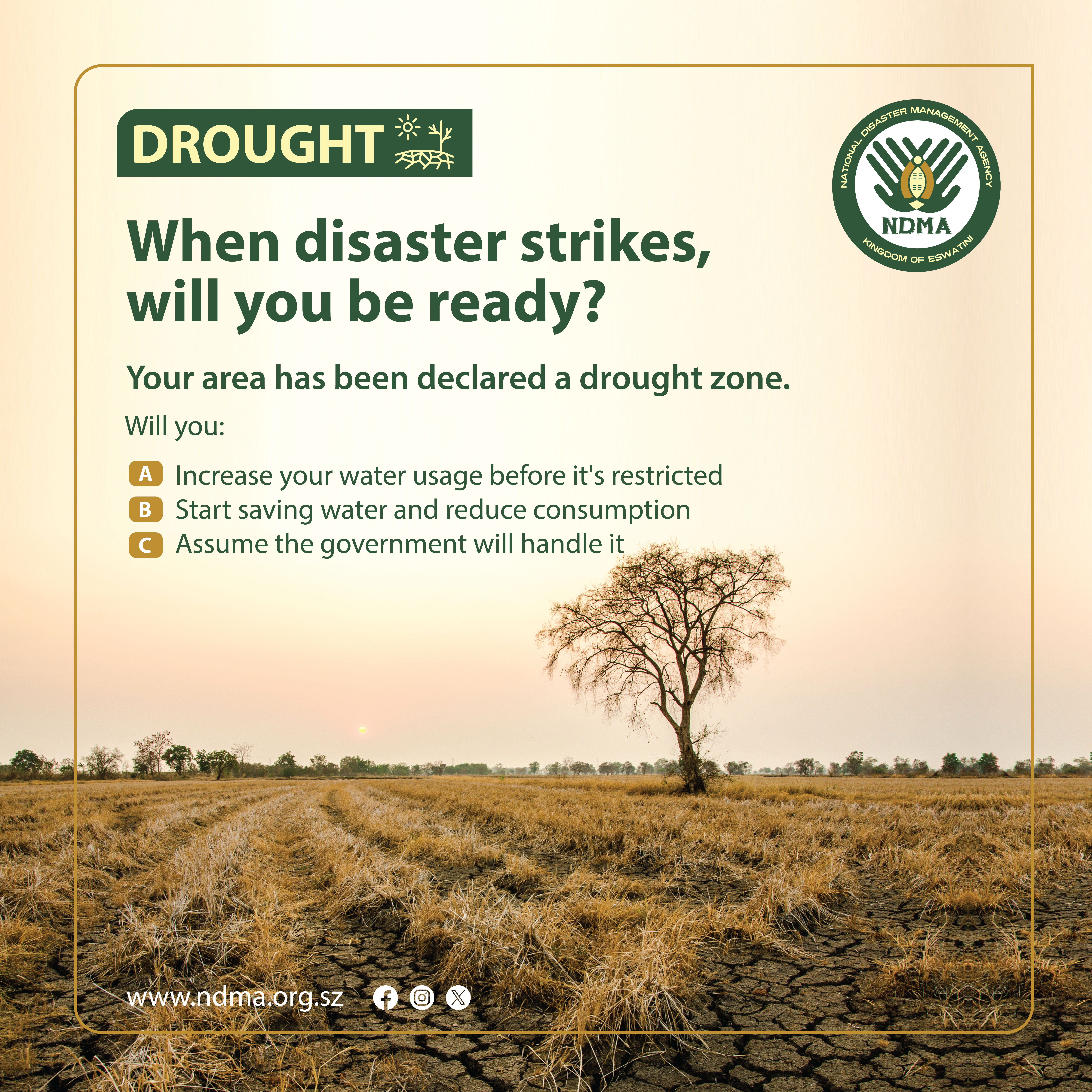Prevention
An adaptive, resilient and disaster
safe Kingdom of Eswatini.
Disaster Prevention
Prevention are all the activities and measures taken to avoid existing and new disaster risks.
The intention is to completely mitigate the potential adverse impacts of hazardous events however, certain risks cannot be eliminated. Prevention aims at reducing vulnerability and exposure in such contexts, where as a result, the risk of disaster is removed e.g dams that eliminate flood risk, land use regulations that do not permit any settlement in high-risk zones. Prevention measures can also be taken during or after a hazardous event or disaster to prevent secondary hazards or their consequences, such as measures to prevent contamination of water.
What we do
Understanding Disaster Risk;
Policies and practices for disaster risk management should be based on an understanding of disaster risk in all its dimensions of vulnerability, capacity, exposure of persons and assets, hazard characteristics and the environment. Such knowledge can be leveraged for the purpose of pre-disaster risk assessment, for prevention and, mitigation and for the development and implementation of appropriate preparedness and effective response to disasters.
Enhancing disaster preparedness for effective response and to "Build Back Better" in recovery, rehabilitation and reconstruction:
The steady growth of disaster risk, including the increase of people and assets exposure, combined with the lessons learned from past disasters, indicates the need to further strengthen disaster preparedness for response, take action in anticipation of events, integrate disaster risk reduction in response preparedness and ensure that capacities are in place for effective response recovery at all levels. Empowering women and persons with disabilities to publicly lead and promote gender equitable and universally accessible response, recovery, rehabilitation and reconstruction approaches is key. Disasters have demonstrated that the recovery rehabilitation and reconstruction phase, which needs to be prepared ahead of a disaster is a critical opportunity to "Build Back Better", including through integrating disaster risk reduction into development measures, making nations and communities resilient to disasters.
Strengthening disaster risk governance to manage disaster risk:
Disaster risk governance at the national, regional and global levels is of great importance for an effective and efficient management of disaster risk. Clear vision, plans, competence, guidance and coordination within and across sectors, as well as participation of relevant stakeholders, are needed. Strengthening disaster risk governance for prevention, mitigation, preparedness, response, recovery and rehabilitation is therefore necessary and fosters collaboration and partnership across mechanisms and institutions for the implementation of instruments relevant to disaster risk reduction and sustainable development.
Investing in disaster risk reduction for resilience:
In case family members are separated from one another during an earthquake (a real possibility during the day when adults are at work and children are at school), develop a plan for reuniting after the disaster.
Ask an out-of-state relative or friend to serve as the ‘family contact’ after the disaster; it is often easier to call long distance. Make sure everyone in the family knows the name, address, and phone number of the contact person.


